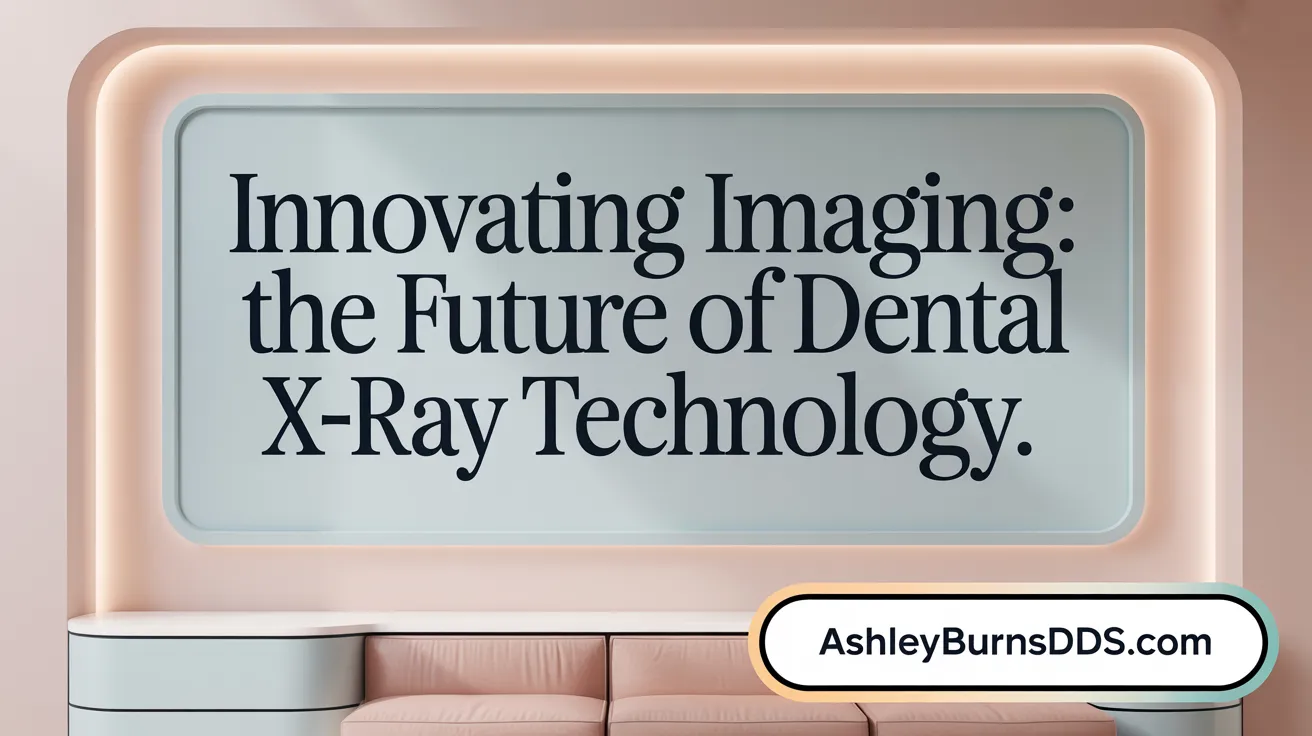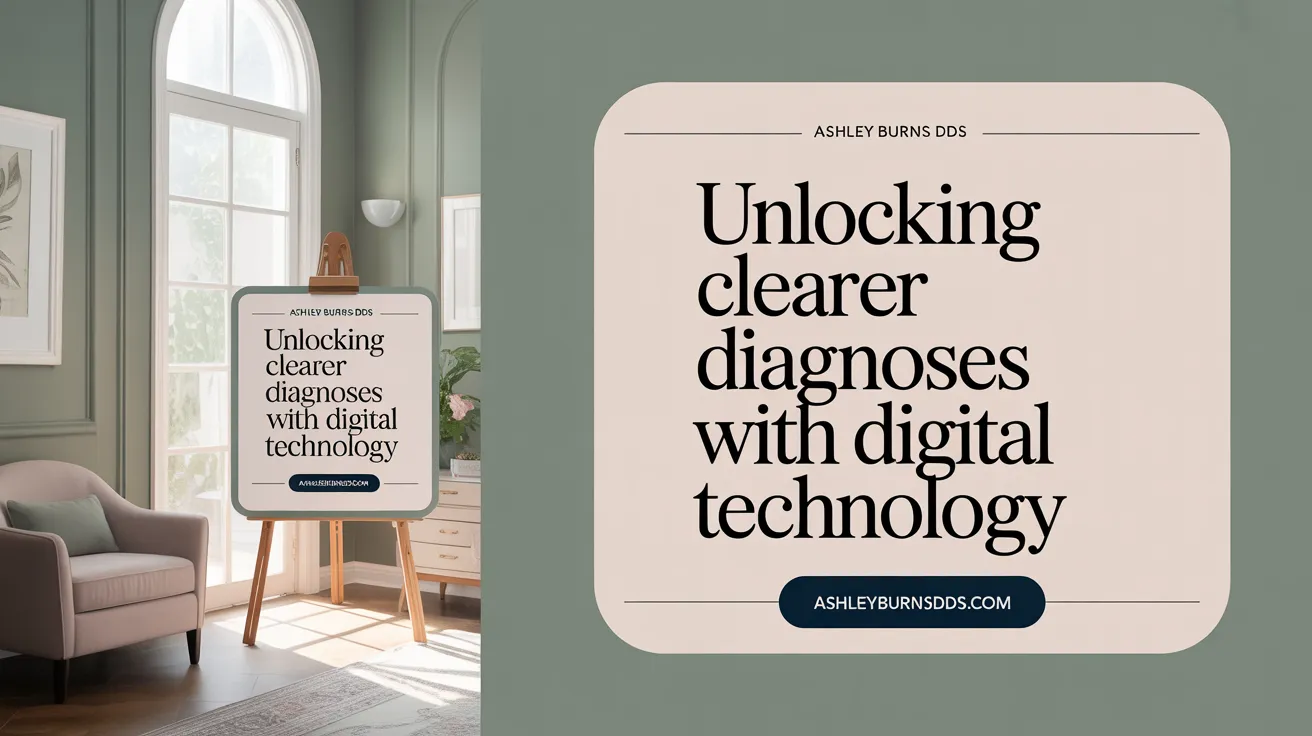The Invisible World Beneath Your Smile
Dental X-rays have become indispensable in modern dentistry, enabling clinicians to peer beneath the surface of teeth and gums to reveal hidden problems. These images provide critical insights that guide diagnosis and treatment planning, ensuring patients receive timely and effective care. From traditional imaging to cutting-edge digital and 3D technologies, X-rays enhance precision, safety, and patient communication in dental practice.
Essential Role of X-Rays in Dental Diagnosis and Treatment Planning

What role do X-rays play in modern dental diagnosis and treatment planning?
Dental X-rays are crucial tools in contemporary dentistry. They provide internal images of teeth, roots, jawbone, and surrounding tissues, revealing issues beyond what can be seen during a standard visual exam. This detailed visibility helps dentists detect cavities, infections, bone loss, impacted or unerupted teeth, cysts, and even some tumors at an early stage.
Thanks to advancements in digital imaging, X-rays now offer high-resolution images with significantly less radiation exposure—up to 80-90% less than traditional film X-rays. These images can be quickly stored, shared, and reviewed, improving diagnostic precision and enabling more personalized treatment plans.
Types of dental X-rays and their specific uses
There are various types of X-rays used depending on the diagnostic needs:
| Type | Location & Use | Details |
|---|---|---|
| Bitewing | Inside the mouth for detecting cavities between teeth | Shows upper and lower teeth in one view, ideal for decay detection |
| Periapical | Focuses on a few teeth, showing roots and surrounding bone | Used for assessing root health, bone loss, or abscesses |
| Occlusal | Inside the mouth, larger area of the arch | Useful for monitoring tooth development in children and detecting fractures |
| Panoramic | Outside the mouth, capturing the entire mouth in one image | Provides a broad view of jaws, teeth, sinuses, and temporomandibular joint (TMJ) |
| Cephalometric | Side view of the head, used mainly for orthodontics | Assists in orthodontic treatment planning and jaw analysis |
| Cone Beam CT (CBCT) | 3D imaging of the jaw and facial structures | Offers detailed 3D views for complex cases like implants or impacted teeth |
How X-rays guide diagnostic accuracy and treatment strategies
By revealing hidden dental conditions, X-rays enable early diagnosis and intervention. They allow dentists to plan orthodontic work, prepare for surgical procedures, and monitor ongoing treatments like root canals or implants. Digital X-rays enhance this process with instant images that can be manipulated (zoomed, contrasted) for better diagnosis. The ability to detect issues before they become severe improves treatment outcomes and patient health.
Examples of procedures aided by X-ray imaging
- Dental Implants: Mapping bone density and nerve placement.
- Root Canal Treatments: Identifying root fractures, infections, and morphology.
- Orthodontics: Assessing development and planning braces.
- Extraction of Impacted Teeth: Location and orientation of wisdom teeth.
- Detection of Tumors: Identifying abnormal growths in jaw or tissues.
Digital X-rays have revolutionized dental diagnostics, making procedures safer, faster, and more accurate. They support early detection, tailored treatment, and continuous monitoring, ultimately enhancing patient care.
Benefits and Importance of X-Ray Technology in Oral Health Assessment

What are the benefits and importance of X-ray technology in dental health assessment?
Dental X-ray technology is essential in modern dentistry because it provides a detailed glimpse beneath the surface of teeth and gums. These internal images help identify issues that can’t be seen during routine checkups, such as cavities between teeth, infections, cysts, tumors, and bone loss.
By revealing hidden problems early on, X-rays allow dentists to diagnose and treat conditions before they become severe. This proactive approach improves patient outcomes and can prevent more complex, costly treatments down the line.
X-rays also play a crucial role in planning procedures like dental implants, orthodontics, and root canals. They help map out the jawbone, nerve locations, and the development of unerupted or impacted teeth.
Various types of X-rays, including intraoral (inside the mouth) and extraoral (outside the mouth), serve specific diagnostic purposes. For instance, bitewing X-rays focus on detecting decay between teeth, while panoramic X-rays provide a broad view of the entire jaw.
Modern advancements like digital X-rays enhance safety by reducing radiation exposure—up to 80-90% compared to traditional film X-rays—and deliver instant, high-quality images. These efficiencies improve diagnosis, streamline treatment planning, and foster better communication between dentist and patient.
Regular use of dental X-rays, when necessary and justified, supports early intervention. This ongoing monitoring helps detect changes over time, guiding preventive care and maintaining oral health.
Strict safety measures, including the use of protective gear and appropriate techniques, ensure that radiation risks are kept minimal. Overall, X-ray technology remains an indispensable, safe, and effective tool for comprehensive dental assessment and care.
Technological Evolution: Advancements in Dental X-Ray Imaging

How has technology advanced in the field of dental X-rays?
Dental X-ray technology has seen significant improvements over recent years, greatly benefiting both clinicians and patients. The most notable change is the shift from traditional film-based X-rays to digital radiography. Digital X-rays provide fast image processing, higher resolution, and importantly, a reduction in radiation exposure—by as much as 80-90%. This shift not only makes dental visits safer but also more efficient, as images are instantly available for review.
In addition to digital systems, the emergence of cone beam computed tomography (CBCT) has revolutionized dental imaging. CBCT offers three-dimensional imaging of the teeth, jawbones, and surrounding structures. This detailed visualization helps in precise treatment planning, especially for dental implants, root canals, and complex orthodontic cases. Its ability to depict soft tissues and bone in 3D enhances the accuracy of diagnoses and reduces treatment risks.
Beyond CBCT, other cutting-edge modalities such as magnetic resonance imaging (MRI) are being explored within dentistry. MRI provides high-contrast images of soft tissues without ionizing radiation, which is particularly useful for diagnosing joint disorders and soft tissue lesions.
Ultrasound technology is also gaining traction as a radiation-free alternative for evaluating soft tissues and fractures. Moreover, the integration of artificial intelligence (AI) with dental imaging promises to improve diagnostic precision, automate routine evaluations, and assist in early detection of dental diseases.
These technological advancements collectively make dental X-rays safer and more effective. They enable earlier detection of issues, tailored treatment approaches, and better patient outcomes.
| Technology Type | Advantages | Additional Benefits |
|---|---|---|
| Digital X-rays | Reduced radiation, instant images | Better image manipulation, enhanced diagnosis |
| CBCT | 3D imaging, excellent for planning | Precise localization of roots and nerves |
| MRI | No ionizing radiation, superior soft tissue contrast | Useful for soft tissue and joint evaluation |
| Ultrasound | No radiation, cost-effective | Soft tissue and fracture assessment |
| AI Integration | Improved diagnostic accuracy | Automation and early disease detection |
As these innovations continue, the future of dental imaging looks promising. Advanced techniques like AI and enhanced 3D imaging are poised to further transform diagnosis, treatment planning, and patient safety in dentistry.
Safety Protocols and Regulatory Guidelines in Dental Radiography

What safety protocols, guidelines, and regulations are associated with dental X-ray procedures?
Dental X-ray procedures are subject to strict safety protocols and regulations to ensure patient and staff safety. These guidelines aim to minimize unnecessary radiation exposure while maintaining diagnostic quality.
Most recent standards recommend reducing the use of traditional protective gear like lead aprons and thyroid collars during routine digital X-rays, as advances in technology and beam restriction techniques have made them less essential. Instead, emphasis is placed on the ALARA (As Low As Reasonably Achievable) principle, encouraging the use of digital imaging systems, collimation to restrict the size of the X-ray beam, and proper patient positioning to limit exposure.
Occupational safety is equally prioritized. Dental staff must monitor their radiation exposure using dosimeters, follow regular safety training, and adhere to documented practices to comply with federal, state, and local regulations. These rules, developed in collaboration with organizations like the ADA and FDA, ensure that dental radiography is performed safely.
Furthermore, campaigns such as Image Gently advocate for radiation safety, especially for vulnerable groups like children. These initiatives promote minimal exposure during pediatric dental X-rays.
Overall, the combination of technology, training, and regulation helps balance effective diagnostics with safety, keeping radiation doses well within safe limits for both patients and dental professionals.
Digital X-Rays: Enhancing Diagnosis and Patient Communication

How do digital X-rays improve diagnosis and patient communication in dentistry?
Digital X-rays provide instant, high-quality images that greatly enhance the ability of dentists to detect dental issues. Because these images are captured and displayed immediately, dentists can quickly identify problems like cavities, bone loss, and other structural abnormalities.
This technology is also instrumental in improving communication with patients. By sharing the digital images on a screen, dentists can visually explain the findings, making it easier for patients to understand their oral health conditions. This visual aid fosters greater engagement and trust, encouraging patients to participate actively in their treatment plans.
One of the most significant benefits of digital X-rays is the substantial reduction in radiation exposure—up to 90% less than traditional film X-rays. This safety feature makes frequent imaging safer, especially for children or patients needing regular monitoring.
Moreover, digital X-ray systems streamline record management. Images are stored electronically, allowing quick retrieval for ongoing assessment and comparison over time. This continuity of care is vital for tracking disease progression or the effectiveness of treatments.
Overall, digital X-rays lead to faster, more accurate diagnoses and allow for earlier interventions. They support a collaborative, patient-centered approach, improving outcomes and fostering better understanding between patients and dental professionals.
Looking Ahead: The Future of Dental Radiography
Dental X-rays remain a cornerstone of modern dental care, enabling practitioners to uncover hidden issues that would otherwise go unnoticed. The evolution from traditional film to advanced digital and 3D imaging technologies has improved diagnostic precision, patient safety, and communication. Ongoing advancements promise further enhancements with artificial intelligence and novel imaging techniques, supporting more personalized, effective treatment. As technologies evolve, maintaining rigorous safety standards and embracing innovation will continue to ensure X-rays play a vital role in safeguarding oral health for years to come.
References
- Dental X-rays: Purpose & Types
- The Role of Dental X-Rays in Modern Dentistry
- The Role of Digital X-Rays in Modern Dental Care
- The Role of X-rays in Modern Dentistry - Why Choose Us ...
- X-Rays/Radiographs
- The Role of Digital X-Rays in Modern Dentistry
- Understanding the Role of Dental X-Rays in Effective ...
- The Role of Digital X-Rays in Modern Dental Care
- The Role of Dental X-Rays in Modern Dentistry
